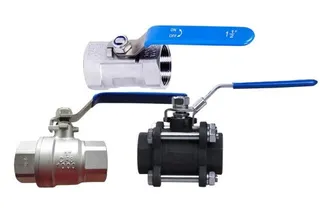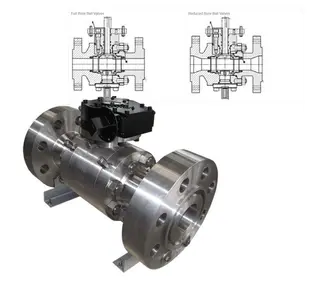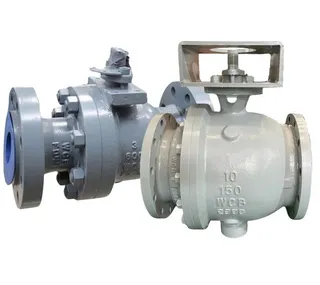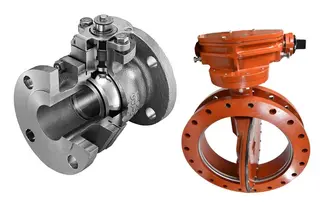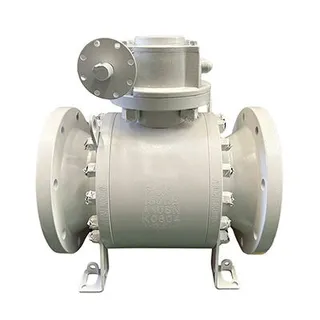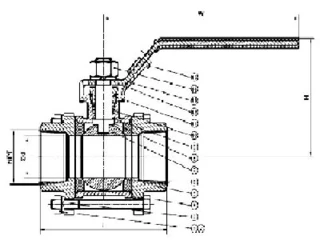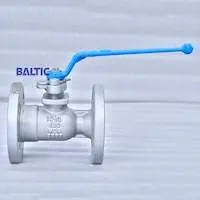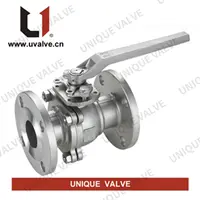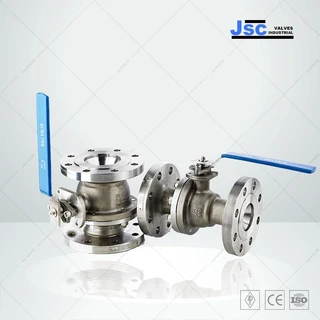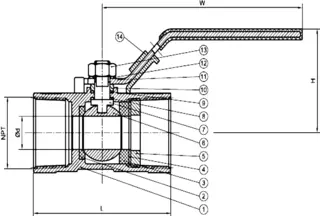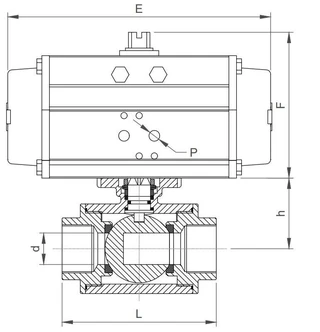Comparing One-Piece, Two-Piece & Three-Piece Ball Valves
Ball valves, as crucial fluid control devices, are widely used in various pipeline systems. Their primary function is to regulate fluid flow or completely shut it off by rotating a spherical ball. Depending on the valve body structure, ball valves can be categorized into one-piece, two-piece, and three-piece ball valves. Each type has distinct structural features, suitable environments, and maintenance conveniences. Selecting the appropriate type of ball valve is essential for ensuring the efficiency and safety of fluid systems.
One-Piece Ball Valve Overview
Structure and Design: The one-piece ball valve features an integrated design, where the ball is stabilized within the valve body by a single plug. The entire valve body is made from a single cast piece, making installation straightforward. Its compact size and lightweight nature make it suitable for small pipelines. However, the flow path is smaller, with a reduced bore design, which limits its application in high-flow pipelines.
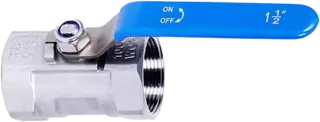
Working Principle: The operation of a one-piece ball valve relies on the mechanical pressure exerted by the valve stem. Rotating the stem turns the ball, controlling the fluid flow. The simplified design ensures good sealing, effectively preventing fluid leakage, making it ideal for low-pressure pipelines.
Applications: Due to its simple structure, ease of maintenance, and low cost, the one-piece ball valve is widely used in low-pressure pipeline systems in industries such as fertilizer, metallurgy, and power. It performs exceptionally well in small-diameter applications where high flow rates are not required.
Maintenance: Maintenance is relatively simple due to the integrated design, allowing for easy disassembly and part replacement. The cast structure of the seat and ball provides good wear resistance and sealing, reducing maintenance efforts.
Two-Piece Ball Valve Overview
Structure and Design: The two-piece ball valve consists of a main body and a secondary body connected by bolts or threads. Unlike the one-piece design, it features a split structure with a full-bore flow path, reducing flow resistance and increasing flow capacity. The two-piece design allows for the replacement of the ball and seat without dismantling the entire valve, saving time and costs.
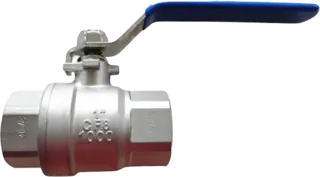
Working Principle: The two-piece ball valve controls fluid flow by rotating the ball. The rotation changes the opening and closing state of the internal passage. The sealing between the ball and seat is crucial, depending on the tightness of the central screws, which helps prevent leaks.
Applications: Suitable for both normal and high-pressure environments, especially where frequent seat replacement or maintenance is required. It is widely used in chemical, petroleum, and natural gas industries. Its split structure and replaceable seat design make it ideal for applications requiring frequent maintenance and part replacement.
Maintenance: Maintenance is more complex, primarily due to the need to adjust the tightness of the central screws to ensure sealing. Despite this, the replaceable seat feature extends the valve's lifespan and prevents leaks due to seal failure.
Three-Piece Ball Valve Overview
Structure and Design: The three-piece ball valve comprises a main body and two secondary bodies, all bolted together. It is designed for ultra-high-pressure environments, featuring a full-bore flow path that provides high flow capacity and low flow resistance. The design allows for easy online maintenance, enabling the replacement of seat seals and the ball without fully dismantling the valve.
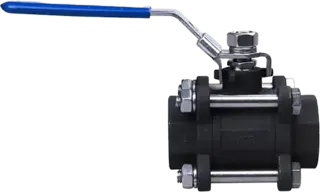
Working Principle: Similar to the two-piece valve, the three-piece ball valve controls fluid flow by rotating the ball. Its design allows for maintenance and part replacement without disassembling the entire valve, offering high maintenance convenience. The full-bore design effectively reduces fluid resistance.
Applications: Primarily used in large-diameter and high-pressure pipeline systems, especially where high flow capacity and low flow resistance are required. It is commonly used in applications demanding high reliability and large flow control, such as in petroleum, natural gas, and large chemical facilities.
Maintenance: The three-piece ball valve offers high maintenance convenience, allowing for online maintenance without dismantling the entire valve. Key components like seat seals and the ball can be quickly replaced, significantly reducing maintenance time and labor. Its design makes maintenance simpler, suitable for industries with high maintenance requirements.
Summary and Comparison
|
Type |
Structural Features |
Flow Path Design |
Suitable Environment |
Maintenance Convenience |
Cost |
|
One-Piece |
Integrated design |
Reduced bore |
Low-pressure pipelines |
Simple |
Lowest |
|
Two-Piece |
Main and secondary bodies |
Full bore |
Normal and high-pressure |
Moderate, requires screw adjustment |
Medium |
|
Three-Piece |
Main body + two secondary bodies |
Full bore |
Ultra-high-pressure |
High, supports online maintenance |
Highest |
In summary, one-piece ball valves are suitable for low-pressure, small-diameter pipelines, featuring simple structures and easy maintenance. Two-piece ball valves are ideal for normal and high-pressure environments, offering higher flow capacity and suitability for frequent maintenance. Three-piece ball valves are designed for ultra-high-pressure environments, providing easy maintenance and online part replacement, making them suitable for applications requiring high flow capacity and low flow resistance. Users can select the appropriate ball valve type based on fluid pressure, flow requirements, and maintenance needs to ensure efficient and safe operation of fluid systems.
Send your message to this supplier
Related Articles from the Supplier
Flow Direction Design of Three-Way Ball Valves
- Dec 14, 2024
Full Bore Ball Valves vs. Reduced Bore Ball Valves
- Oct 27, 2025
Classification Of Ball Valves
- May 03, 2018
Ball Valves and Butterfly Valves: How to Choose?
- Sep 02, 2025
Metal to Metal Ball Valves Characteristics
- Dec 14, 2024
What are Eccentric Segmented Ball Valves?
- Aug 27, 2025
Related Articles from China Manufacturers
One-piece Ball Valves
- Jan 09, 2023
Landee Announces 1 Piece Stainless Steel Ball Valve
- Aug 24, 2012
Cybertruck's One-piece Die-cast Body
- Jan 17, 2023
Related Products Mentioned in the Article
Zhejiang Kosen Valve Co., Ltd.
- https://www.kosenvalve.com/
- Address: Dongou Industrial Zone, Oubei, Wenzhou, Zhejiang, China
- Phone: 86 577 5798 7171
- Business Type: Industry & Trading, Manufacturer,
Supplier Website
Source: https://www.kosenvalve.com/comparing-one-piece-two-piece-three-piece-ball-valves.html

